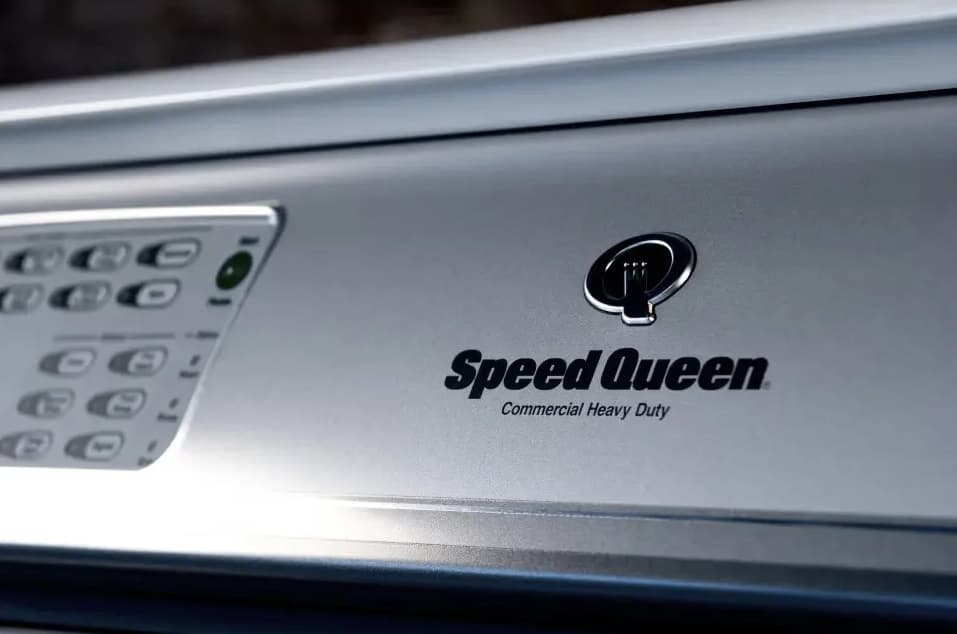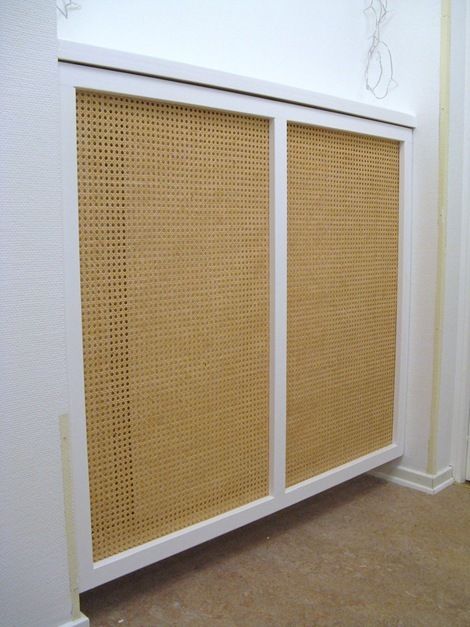Speed Queen is one of the most popular brands for commercial-grade washers and dryers. Known for their durability and reliability, Speed Queen commercial washers are designed to withstand heavy use in laundromats, apartments, hospitals, and other high-traffic locations.
However, like any machine, Speed Queen washers can occasionally encounter issues that interrupt normal operation. When your commercial washer starts displaying error codes, fails to run properly, or simply shuts off mid-cycle, a reset procedure can often resolve the problem quickly.
Resetting a Speed Queen commercial washer reboots the computerized control systems, clearing any glitches and restoring normal function. This straightforward process only takes a few minutes, and anyone can perform it safely with proper precautions.
Speed Queen Commercial Washer Reset Button

In this comprehensive guide, we’ll walk you through the complete process of resetting your Speed Queen commercial washer step-by-step. Let’s get started!
How Does Resetting a Speed Queen Washer Help?
Before we dive into the reset procedure, let’s look at some of the main benefits:
- Clears error codes or fault messages: A washer reset erases any temporary error codes or alerts related to the computerized controls. This often resolves issues caused by glitches.
- Fixes frozen machines or cycles: If the display is frozen or the washer fails to advance through wash cycles, a reset can get it back on track.
- Recalibrates sensors: The reset process recalibrates the various sensors and input devices in a Speed Queen washer, which may fix inaccurate readings.
- Restores computer controls: When the main control unit experiences problems, a reset will reboot the computerized brain and restore normal programming.
Resetting can resolve a wide range of issues caused by temporary software glitches or inaccurate sensor readings. It’s a quick and effective first step in troubleshooting Speed Queen washer problems before exploring more complex solutions.
Important Precautions Before Resetting Your Machine
While the reset procedure is perfectly safe when done properly, certain precautions are necessary:
- Unplug the washer first to avoid electric shock hazards.
- Check for water inlet issues that may cause leaks after the reset process.
- Have towels ready to soak up any residual water in hoses.
- Review control panel functions so you can restore settings later.
- Refer to the user manual for model-specific steps.
- Wait the recommended time after resetting before restoring power.
Accessing the Speed Queen Washer Control Panel
To perform the reset, you’ll need access to the main control panel on your commercial washer. Speed Queen locates these on the upper front corners of their front-loading models for easy access:
Check your user manual to locate the control panel on your specific model. You may need to remove a small access panel.
Step-by-Step Guide to Resetting Your Speed Queen Commercial Washer
Once you’ve taken the proper precautions, follow these steps to safely reset your machine:
Step 1: Power Off the Washer
The first step is to disconnect the power to the washer:
- Unplug the power cord from the outlet/disconnect the power disconnect box.
- Make sure all lights on the display shut off to confirm it’s unpowered.
- Wait 2-3 minutes before moving to ensure it powers down fully.
This initiates the reset process by clearing the washer’s temporary memory.
Step 2: Locate the Reset Button
Your Speed Queen’s reset button may be in different locations depending on the specific model:
- A small round button labeled “Reset”
- A touchscreen button option
- Hidden behind a removable access panel
Check your owner’s manual or inspect the control panel closely to locate this important button before proceeding.
Step 3: Press and Hold the Reset Button
With the power disconnected, hold down the Reset button for 5-20 seconds (check the manual for the recommended time).
You’ll likely need to use the tip of a pen or paperclip to access a recessed reset switch. Apply steady pressure until the reset cycle initiates.
Step 4: Power Washer Back On
After holding the Reset button for the prescribed time, you can reconnect power and turn the washer back on:
- Plug the washer back into the power source
- Power on the unit at the control panel
- Set programming to previous settings (cycle, temp.)
The washer may display “Reset Complete” or other confirmation messages as it reboots.
Step 5: Run Empty Test Cycle
It’s good practice to test normal washer operation before adding laundry:
- Select the shortest cycle setting
- Start the test cycle with the drum empty
- Verify proper water temperature, duration
- Check for leaks, abnormal sounds
- Confirm cycle completes properly
This quick test can confirm that your reset successfully restored normal programming and functionality.
What If Speed Queen Washer Problems Persist After Resetting?
In most cases, resetting the washer clears up error messages or operational problems. However, if issues continue even after a successful reset procedure, further troubleshooting or repair may be needed.
Here are some next steps if your Speed Queen washer problems won’t go away:
- Carefully review Speed Queen troubleshooting guidance in your owner’s manual
- Contact Speed Queen customer support with a detailed issue description
- Schedule service call with authorized Speed Queen repair technicians
- Inspect hoses, valves, and components for leaks, damage, or debris
- Test all inputs like water supply and drain lines for proper flow/pressure
- Consider a control board or other electronics replacement
While resets resolve many washer faults, chronic or recurring issues should be inspected by qualified appliance service pros in your area.
FAQs About Resetting Commercial Speed Queen Washers
Here are answers to some frequently asked questions about resetting troublesome Speed Queen washers:
How long should I hold the reset button down?
- Recommended reset button hold times range from 5-20 seconds, depending on the model. Check the user manual for specifics.
Where is the reset button located?
- Locations vary, but common spots: are the control panel, under the access panel, and behind the door rim. Refer to manual diagrams.
Do I need a paper clip for the reset button?
- If recessed, a clip, pen tip, or small screwdriver needs to access it. Apply steady pressure.
How soon after resetting can I restart the washer?
- Wait the recommended duration after resetting before restoring power. This allows reboot.
Will resetting erase my custom settings?
- No, the process preserves programmed cycles, preferences, and other user settings.
Key Takeaways on Resetting Speed Queen Commercial Washers
While Speed Queen washers are made for durability, complex control systems can be impacted by temporary glitches. Resetting the computerized panel often clears up a range of operational problems.
By following basic precautions and the step-by-step resetting procedure, owners can often restore functionality themselves without a costly service call. However, if issues persist post-reset, professional assessment may be needed.
Consistently resetting washers when problems arise and performing preventative maintenance improves longevity and reliability. But it’s also a good idea to keep authorized service contact information handy just in case – because even the best commercial-grade washers have occasional issues outside of an owner’s control.
Troubleshooting Common Speed Queen Washer Faults and Error Codes
While resetting can fix many problems, Speed Queen washers may still display cryptic fault codes. Understanding the causes behind common codes helps troubleshoot issues:
- F## Errors: Failure to fill properly within the allotted time. Confirm water supply valves open and, no kinks/clogs in hoses.
- Sd Errors: Issue with soap/detergent dispensers. Check for clogs, and ensure detergent compartments are empty.
- UL Errors: Unbalanced loads can trigger alerts. Redistribute heavier items in the drum.
- d## Errors: Often a drain issue. Check drain hose/outlet for blockages.
- Lo FL: Water level too low. This could indicate pressure switch or inlet valve defects.
- HI FL: Water overfilling drum. Likely a faulty pressure switch triggering excess inlet flow.
Note the number after codes for technicians. Trying a reset first can determine if transient errors self-correct.
Step-By-Step Speed Queen Washer Troubleshooting Guidelines
Beyond codes, following structured troubleshooting steps isolates problems:
- Verify proper installation: Issues like leaks or drain failures relate to improper venting/connections.
- Inspect hoses, valves, and lines: Look for clogs from debris that restrict water flow.
- Check error code guides: Diagnose issues based on fault codes in owner’s manuals.
- Confirm adequate inlet water pressure: Low pressure prevents proper fills.
- Test cycle without laundry: Isolates drum vs. drain/inlet problems.
- Listen for abnormal sounds: Strange noises signal component failures.
- Review technical manual schematics: Pinpoint affected systems based on symptoms.
- Consider control board failures: Faulty boards disrupt programming.
Methodically working through structured troubleshooting and considering potential root causes speeds up repair.
Preventing Breakdowns with Proactive Speed Queen Maintenance
While even reliable commercial washers eventually face problems, good maintenance practices minimize operational disruptions:
- Clean lint traps regularly: Excess lint impacts airflow, and motor efficiency.
- Use recommended detergents: Harsh chemicals corrode seals, and hoses.
- Level machines properly: Imbalanced units vibrate excessively over time.
- Inspect hoses/fittings for leaks: Small leaks grow over continuous use.
- Clean water inlet valves: Mineral buildup impedes valve function.
- Lubricate components as specified: Keep parts moving freely.
- Tune up annually: Catch minor issues before cascading failures.
Technicians can optimize washers proactively with thorough annual checkups based on make/model.
Installing Speed Queen Washer Failure Alert Systems
Rather than relying solely on owners noticing faults, smart sensor systems provide real-time failure alerts for additional protection:
- Water leak detection: Moisture sensors attached to hoses trigger alerts in case of leaks before major flooding.
- Imbalanced load shutdown: Gyroscopic sensors stop washers if loads shift excessively, preventing damage.
- Motor overheat warnings: Thermostats cut power if temperatures rise too high due to worn bearings.
- Error code home automation integration: Fault messages automatically alert owners via apps and dashboards.
While upfront costs are higher, preventative sensor systems reduce repair bills and outages over the lifecycle of commercial laundry machines.
Choosing Speed Queen Commercial Washers for Reliability
Speed Queen rightfully stakes its reputation on commercial washer/dryer reliability and longevity:
- Robust Components
With metal pulleys, thick steel drums, and industrial-grade motors, these washers withstand heavy daily loads over years of service.
- Cutting-Edge Controls
User-friendly microprocessor controls offer flexible custom programming for specialized commercial applications.
- Powerful Direct Drive
Direct drive transmissions efficiently transfer high torque for fast spins, wasting less energy.
- Stainless Steel Cabinets
Corrosion-resistant stainless steel cabinets provide a durable yet attractive housing.
New Speed Queen Smart Features
While preserving their durability edge, new connected tech also improves Speed Queen ownership:
- Real-time monitoring: Get alerts whenever cycles are complete or errors occur, even remotely.
- Usage insights: Details like average daily loads help fine-tune operations.
- Machine optimization: Receive usage threshold alerts to improve preventative maintenance.
- Automatic support dispatch: Get instant tech scheduling as soon as codes occur.
When evaluating commercial laundry replacements, modern Speed Queen offerings marry powerhouse performance with smart conveniences.
Overriding Problems: Using Speed Queen Commercial Washer Manual Controls
If all else fails to restore normal washer operation, Speed Queen equips machines with manual overrides enabling owners to still use washers short-term in a pinch:
- Bypass Start
Initiate cycles manually bypassing control boards with start relay overrides.
- Manual Water Valve Control
Open/close water valves independently to isolate inlet issues.
- Spin Speed Adjustments
Modify G-forces manually based on load needs.
- Custom Temperature Selection
Set specific wash/rinse temperatures.
While technicians resolve control failures, manual modes allow owners to limp along minimizing business disruptions. Just take care not to overload out-of-balance washers risking leaks or further equipment failures.
Replacing Speed Queen Washers and Dryers
After extended years subjected to demanding commercial service, Speed Queen washers and dryers inevitably wear down requiring decisions around replacement:
- Evaluate vs. Repair Cost
At a certain point, replacing aging units becomes more cost-effective than pouring money into repairs.
- Review Newer Model Capabilities
New features like sensors and home automation connectivity improve business insights.
- Confirm Electrical Compatibility
Compare power, voltage, and outlet needs when transitioning to new equipment.
- Account for Installation Expenses
Factor in wiring revisions, venting adjustments, and labor for installations.
- Upgrade Slowly
Run new washers/dryers in parallel rather than switching over all at once.
- Sell Used Units
Flip functional outgoing models to other owners rather than junking to recoup value.
With good lifecycle planning as equipment ages, businesses can replace commercial laundry machines proactively on their own terms.
Locating Speed Queen Commercial Washer Supplies and Replacement Parts
To maintain aging Speed Queen washers still churning out daily loads, owners need access to supplies and components. Helpful part sourcing tips:
- Consult authorized dealers
Speed Queen dealers stock common belts, knobs, seals and hoses.
- Check Speed Queen’s Parts Store
Order direct from the manufacturer for quick fulfillment.
- Search reputable appliance parts warehouses
Sites like AppliancePartsPros.com and PartSelect.com carry many major commercial laundry parts.
- Utilize technical schematics
Accurately identify belt lengths, screw sizes, and part numbers.
- Consider third-party components
Evaluate aftermarket hoses, valves, and belts if OEM supplies are back ordered.
With many distributors carrying supplies for commercial laundry brands, owners can likely source repair parts conveniently without excessive delays.
Resetting Speed Queen Washers with Manual Overrides
If computerized control systems fail, Speed Queen enables manually operating washers to finish laundry cycles:
- Bypass Start Buttons
Initiate fill, agitate, spin, and drain sequences independently.
- Variable Water Temperature
Set precise fill water temps with manual thermostats.
- Adjustable Spin Speeds
Match RPMs to load contents with resistant tachometers.
- Secondary Water Inlet Valves
Ensure inlet flow control despite electronic issues.
- Emergency Drain Lines
Access low-tech gravity drains if pumps malfunction.
While manual modes lack sophistication, temporarily reverting to basics keeps businesses running until proper repairs. But take care only using such measures short-term.
Leveraging Speed Queen Authorized Technician Networks
While DIY maintenance and resets resolve many washer issues, Speed Queen also coordinates extensive authorized service networks to assist owners with more complex repairs:
- Top-Tier Diagnostics Experience
Factory training ensures technicians systematically isolate problems.
- Genuine OEM Part Replacement
Technicians ensure superior component reliability reinstalling parts.
- Commercial Laundry Machinery Expertise
Extensive background with heavy speed queen equipment.
- Warranty Service Facilitation
Help owners navigate warranty coverage, approvals, and reimbursement.
- Emergency Support
24/7 contact availability to minimize downtime.
Covering both routine maintenance and major repairs, authorized networks combine convenience, expertise, and genuine components.
Safely Storing Speed Queen Washer Detergents and Chemicals
To avoid leaks or accidents, commercial laundry operators use best practices for safely storing cleaning chemicals:
- Review Material Safety Data Sheets
Follow guidance on toxicity, reactivity, and protective equipment.
- Never Mix Incompatible Chemicals
Keep alkaline, acidic, and oxidizing agents separate.
- Avoid Temperature Extremes
Heat/cold degrade chemicals expanding failure risks.
- Secure Dispenser Connections
Confirm fittings won’t vibrate loose over time.
- Store Chemicals Below Eye Level
Reduces spill exposure keeping heavy containers low.
- Confirm Adequate Ventilation
Ensure air circulates to avoid dangerous fume buildup.
- Lock Storage Rooms
Keep chemicals inaccessible to untrained personnel.
With caution exercised properly selecting, using, and storing cleaning agents, owners remain compliant while avoiding staff safety incidents or environmental releases.
Also Check:
- Maytag Top Load Washer Filter Location
- Samsung Top Load Washer Filter Location
- Whirlpool Washing Machine Reset Button
- LG Washing Machine Reset Button
Conclusion:
From displaying frustrating error codes to failing to advance through wash cycles, common Speed Queen washer malfunctions can interrupt laundering and impact profits for busy owners.
Fortunately, the straightforward process outlined resets the intelligent control systems governing these commercial workhorses. By rebooting the computerized controls, the vast majority of glitches resolve themselves instantly.
Just be certain to take prudent precautions before initiating a reset, follow the step-by-step procedure, and test normal function afterward.
With this simple process under their belt, business owners can minimize disruptions and maintain their valuable fleet of Speed Queen commercial washers for years of reliable service.


